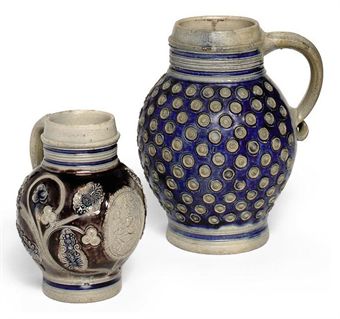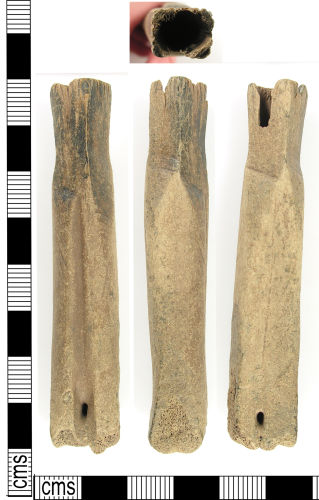Whilst I love the really old finds, I’m getting a bit fed up again
of all the browns on the blog, so time for some pretties.
Over the last 8 months I’ve amassed a small collection of
Westerwald pottery shards. Whilst they are less prevalent than Tudor green glaze,
blue and white china, slipware or even delft, I usually spot a piece of
Westerwald on each visit to the Thames.
The most pleasing finds have relief or incised
decoration, impressed circular flower heads, medallions, coats of arms, hand drawn zig
zags and outlines highlighting what
appear to be petals or leaves. The modern appearing shiny cobalt blue glaze,
often against a grey background, belies their age. One find has manganese
purple alongside the blue, a rare find. Apparently this colour was only used
between 1650 – 1680 and again briefly in the final quarter of the 19th
century. Cobalt blue and manganese were the only two colours which could withstand
the extreme temperatures required in stoneware kilns.
 |
| Westerwald Stoneware Pottery Fragments Found Mudlarking on the Thames |
 |
| Westerwald Stoneware Jugs 1700 Christies |
More common are larger shards from the rims of tankards, with
their distinctive lines of cobalt blue amid a series of circular raised tracks.
 |
| Westerwald Pottery Shards from tankards found Mudlarking on the Thames |
 |
| 18th Century Westerwald Stoneware Winebottle and salt glazed mugs from Reeham and Dansie auctioneers |
Westwerwald is a region of Germany east of the Rhine, where the
stoneware pottery industry was well established at end of the 16th
century. Its golden age was in the 17th century and remained buoyant
in the 18th and 19th centuries.
Jugs, tankards, mugs and chamber pots were the primary
products, particularly popular between 1675-1775 and imported to London in
great quantities until the end of the 19th century. So best guess is that these shards are from
between 1675- 1900 – a rather irritatingly
wide range.
 |
| Westerwald pottery shard from Thames Foreshore |















